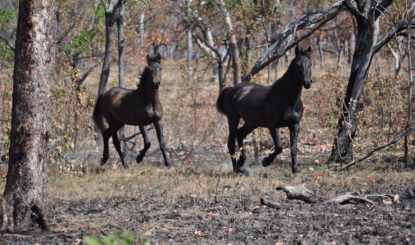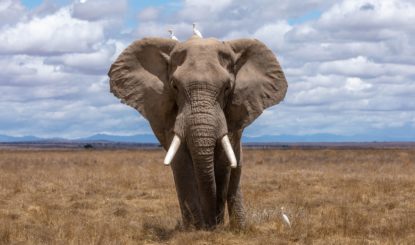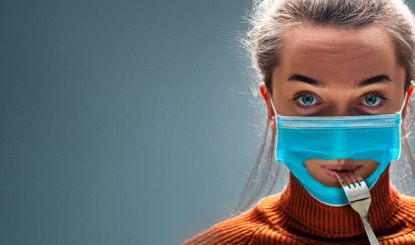Brumby Massacre: The Bloody Scapegoating of Australia’s Wild Horses
Since the white man first set foot in Australia, brumbies have roamed its landscapes – a symbol of resilience and cultural heritage. Despite this long-shared history, Australian authorities label them “invasive, feral pests,” and since November 2023, mass aerial shootings of these iconic wild horses have taken place (again!). We demand an end to this cruelty!
The Origins of the Brumbies
Originally brought from England to Australia with the First Fleet in 1788, brumbies formed the backbone of the country’s exploration, agriculture and even military efforts. When they were no longer needed, they were released into the wild. The horses adapted to Australia’s harsh terrain and formed wild herds across the country – from the Australian Alps in New South Wales (NSW) and Victoria (VIC), particularly in the Kosciuszko National Park (KNP), also known as the Snowy Mountains, to the vast outback of the Northern Territory and Western Australia. They are as much a part of the land as the settlers who colonised it. brumbies are therefore just as native to Australia as the white man! Yet despite their long history and cultural significance, they are branded by authorities as “invasive, feral pests.”
The Current Massacres in Kosciuszko National Park, NSW
Since November 2023, after a 20-year ban on shootings in New South Wales, the iconic horses in Kosciuszko National Park have been subjected to brutal aerial culling. They are shot from helicopters in a bloodbath that poisons both land and waterways. From October 2023 to October 2024, AUD 8.2 million in public funds were spent to shoot and remove 8,000 brumbies.
Standard Operating Procedures (SOPs) of Kosciuszko National Park state that killings must follow “humane” conditions: horses should be shot in the head or heart to ensure a swift, painless death. If the first shot fails, a second shot should be administered quickly to euthanise the animal.
But how can anyone accurately shoot a running, panicked animal from a flying helicopter? Post-shooting investigations have shown that many brumbies were hit in the abdomen, neck or back, suffering slow and agonising deaths. Pregnant mares shot in the stomach aborted. Foals too young to survive alone wandered around their mothers’ corpses before starving to death. These facts directly contradict the SOPs. The claim that the killings are humane because “entire family groups are shot at once” is a lie. Even if a whole group is killed – if that’s even achieved – it does not guarantee a humane death.
Manufactured Arguments
Government agencies, Minister for Climate Change, Energy, Heritage and the Environment Penny Sharpe, and groups like the Invasive Species Council have long insisted brumbies pose an ecological threat. They claim the horses damage fragile ecosystems, displace native species and harm biodiversity by contaminating soil, causing erosion and destroying habitats.
However, no brumby-specific impact study has ever been conducted to support these claims. No study has proven that brumbies damage vegetation, fragile ecosystems or harm native or threatened species. The government instead refers to studies on other species that mention brumbies as “potential threats” – despite repeated calls from advocates for a direct, independent brumby study.
In 2023, Penny Sharpe estimated there were 12,000 to 22,000 brumbies in Kosciuszko National Park. But that same year, experienced biostatistician Claire Galea exposed those population estimates as “flawed” and “exaggerated.”
On 3 March 2025, Minister Sharpe stated that “since over 8,000 brumbies have been removed from the park since November 2023, aerial shooting is currently on hold but may resume. Ground shooting in the KNP continues, as do transports of brumbies to abattoirs.”
Media Censorship and Lack of Transparency
Another troubling aspect is the restricted and biased media coverage of brumbies. Images of suffering or dead brumbies, whose bodies rot and contaminate water sources, have been suppressed – in order to keep public outrage to a minimum. This lack of transparency raises serious ethical concerns about democracy, conservation policy and the public’s right to know how their national parks are being managed – or mismanaged!
The Truth: Brumbies as Ecosystem Enhancers
Brumbies have become a vital part of Australia’s environment and biodiversity. Their grazing helps regulate plant growth, prevent overgrowth and reduce bushfire risk by clearing dense, dry vegetation. They feed on coarse plants, recycle plant matter and make more nutritious plants accessible to other herbivores.
Their manure enriches the soil, promotes native plant growth, supports microbial life and improves water retention – especially in dry regions.
Through their semi-nomadic movements, brumbies disperse seeds and foster vegetative regeneration, supporting biodiversity.
A Model Example: FFW’s Wild Horse Sanctuary, Bonrook
With over 35 years of experience – since 1989 – Fondation Franz Weber can confirm that brumbies pose no threat to Australia’s flora and fauna and that there is no justification for the shootings. At the Wild Horse Sanctuary Bonrook in the Northern Territory – Australia’s only sanctuary with a significant brumby population, where around 800 brumbies live alongside 120 wild cattle, 100 water buffalo and many native animals and bird species in balance across nearly 500 km².
Relocating brumbies from Kosciuszko National Park in southern NSW to Bonrook in the Northern Territory would be a challenging undertaking. The distance is 3,730 km – over 50 hours of travel, equivalent to a trip from Lisbon to Moscow. Transporting even domesticated horses is risky – let alone wild ones. Moving wild horses is dangerous and expensive. Moreover, brumbies from NSW are not physically suited to the hot, subtropical climate of the Northern Territory.
Demand an End to These Cruel Killings!
The shootings in Kosciuszko National Park are not conservation – they are political convenience, scapegoating and an attempt to cover decades of failed environmental management. If environmental protection were truly the priority, authorities would invest in humane population control, reintroduce natural predators and implement ethical wildlife management strategies.
Australia’s brumbies are more than wild horses – they are living symbols of endurance, history and nature’s delicate balance. Their slaughter is not only unnecessary but a stain on the nation’s commitment to animal welfare. Until the silence is broken and public awareness rises, the killings will continue – unchecked, unchallenged and utterly unjustified. It’s time for real conservation – not a state-sanctioned bloodbath!
We need your voice to help stop these killings! Click the link, sign the campaign letter and write to decision-makers to STOP THE BRUMBY MASSACRE NOW!
Franz Weber Territory – Bonrook Station
In 1987 and 1988, Fondation Franz Weber (FFW) brought the then-ongoing Brumby bloodbath in Australia to public attention in Europe, launched a campaign and raised awareness about the issue. In response to the international outcry, FFW purchased Bonrook Station in November 1989 – a former cattle station in Australia’s Northern Territory. Located 2.5 hours south of Darwin by car, the wild horse sanctuary “Franz Weber Territory” was born: a fenced, protected area of natural bushland spanning 495 km² (18 x 28 km – almost the size of the Balearic island of Ibiza), where around 800 brumbies roam freely, undisturbed, unhandled and untouched in their family groups – in harmony with nature and many native species.


